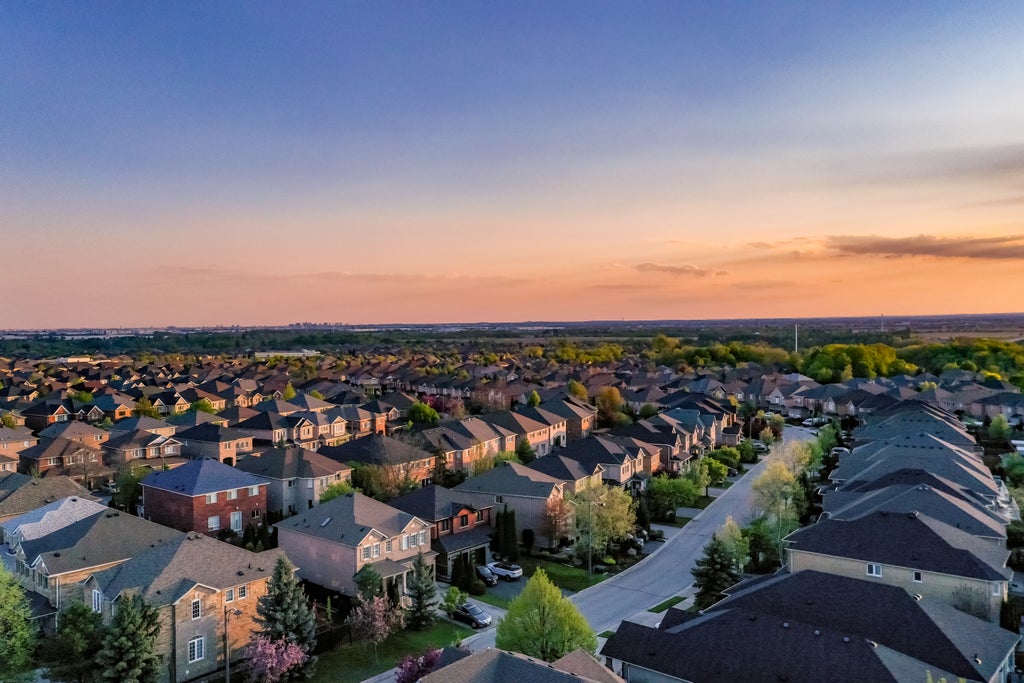Overview
Homebuying demand remains weak as households address economic and policy uncertainty; potential inflation pressures from tariffs; and concerns about job losses and personal financial situations.
- Forecast home price growth is returning to meet long-term averages.
- Tennessee and South Carolina are coming onto the map as attractive retirement destinations, and their popularity is reflected in home prices.
- The income needed to afford a median-priced home is 22% higher than the average national wage.
National home price growth
February 2025 data
Source: Cotality
Affordability meter
Source: Cotality
Insights from Chief Economist Selma Hepp
For the last two and a half years, prices have ebbed and flowed below the records set in June 2022, but in February, prices finally reached a new high point putting the national median home price at $385,000.
“Despite recent increases in home prices breaking the trend of flat prices, February’s seasonal rise remained subdued compared to pre-pandemic levels, contributing to a decline in overall annual appreciation. This continued cooling reflects weak homebuying demand as households address economic and policy uncertainty; potential inflation pressures from tariffs; and concerns about job losses and personal financial situation,” said Cotality’s Chief Economist Selma Hepp.
Still, not every state has equal home price growth. The Northeast has spent months surpassing national average growth trends, but in February, West Virginia made an appearance as one of the top five states for price growth. Tennessee and South Carolina are also seeing new price records, which could continue as more people move to southern states surrounding Florida. The states have a median home price of $335,000 and $332,000, respectively. As more baby boomers move into retirement, they are looking for affordable regions, and Appalachia has become an increasingly popular destination. The influx of well-heeled retirees has the potential to alter these markets that have been historically affordable.
Meanwhile, Hawaii and Washington D.C. are the only two states seeing negative home price growth. Despite the declines, both states have median home prices well above the national average.
Top 10 hottest markets
Source: Cotality
Top 10 coolest markets
Source: Cotality
Which areas are affordable?
Tracking the top 5 highest and lowest U.S. median sales prices
Source: Cotality
Markets to watch
Tracking markets with a very high risk of price decline
Source: Cotality
High-risk market home price trends
Source: Cotality


Methodology
The CoreLogic HPI™ is built on industry-leading public record, servicing and securities real-estate databases and incorporates more than 40 years of repeat-sales transactions for analyzing home price trends. Generally released on the first Tuesday of each month with an average five-week lag, the CoreLogic HPI is designed to provide an early indication of home price trends by market segment and for the “Single-Family Combined” tier, representing the most comprehensive set of properties, including all sales for single-family attached and single-family detached properties. The indices are fully revised with each release and employ techniques to signal turning points sooner. The CoreLogic HPI provides measures for multiple market segments, referred to as tiers, based on property type, price, time between sales, loan type (conforming vs. non-conforming) and distressed sales. Broad national coverage is available from the national level down to ZIP Code, including non-disclosure states.
CoreLogic HPI Forecasts™ are based on a two-stage, error-correction econometric model that combines the equilibrium home price—as a function of real disposable income per capita—with short-run fluctuations caused by market momentum, mean-reversion, and exogenous economic shocks like changes in the unemployment rate. With a 30-year forecast horizon, CoreLogic HPI Forecasts project CoreLogic HPI levels for two tiers — “Single-Family Combined” (both attached and detached) and “Single-Family Combined Excluding Distressed Sales.” As a companion to the CoreLogic HPI Forecasts, Stress-Testing Scenarios align with Comprehensive Capital Analysis and Review (CCAR) national scenarios to project five years of home prices under baseline, adverse and severely adverse scenarios at state, metropolitan areas and ZIP Code levels. The forecast accuracy represents a 95% statistical confidence interval with a +/- 2% margin of error for the index.
About Market Risk Indicator
Market Risk Indicators are a subscription-based analytics solution that provide monthly updates on the overall “health” of housing markets across the country. CoreLogic data scientists combine world-class analytics with detailed economic and housing data to help determine the likelihood of a housing bubble burst in 392 major metros and all 50 states. Market Risk Indicators is a multi-phase regression model that provides a probability score (from 1 to 100) on the likelihood of two scenarios per metro: a >10% price reduction and a ≤ 10% price reduction. The higher the score, the higher the risk of a price reduction.













